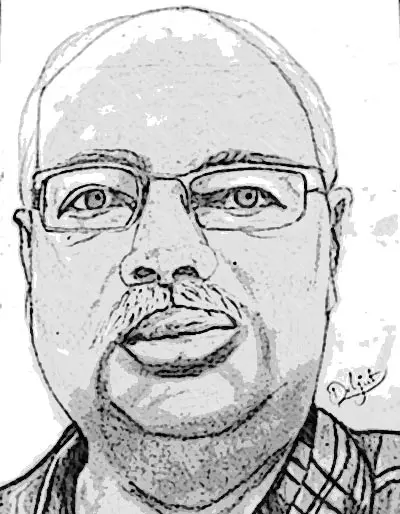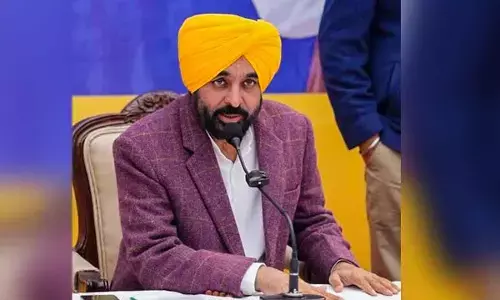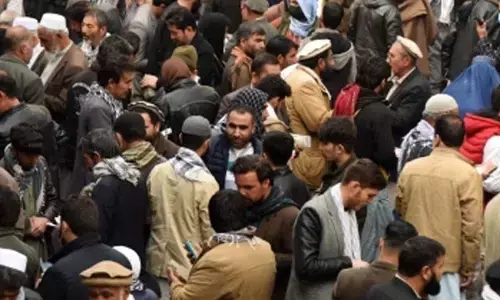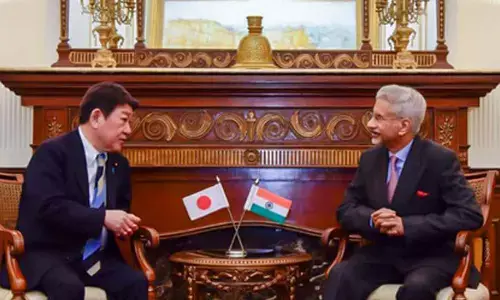BJP, Oppn get down to brass tacks
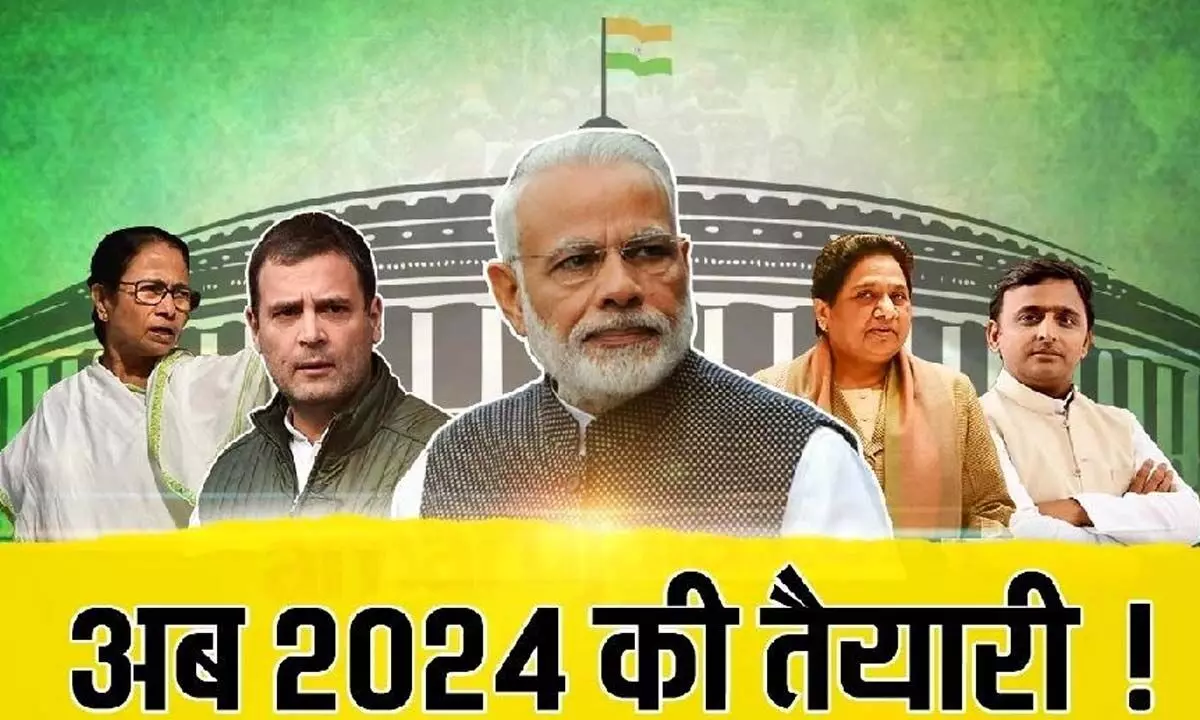
The recent political developments including the organisational changes in BJP clearly indicate that the saffron party is keeping the option of going for early Lok Sabha elections as it thinks that it might help their prospects in the state elections as well.
The recent political developments including the organisational changes in BJP clearly indicate that the saffron party is keeping the option of going for early Lok Sabha elections as it thinks that it might help their prospects in the state elections as well.
Sources say that the Union Home Minister Amit Shah and BJP national president Jagan Prakash Nadda had assessed the party prospects, advantages and disadvantages of going in for early elections along with the Assembly elections to the five states Rajasthan, Madhya Pradesh, Chhattisgarh, Mizoram and Telangana.
Though the party is in the process of analysing the pros and cons of early and combined elections and the winning prospects of the party, the buzz is that Lok Sabha elections would be held in December or January. The question is will it be Lok Sabha and five states where Assembly polls are due, or will it be one nation one polls?
The BJP which is keen that it should be back in driver’s seat in Lok Sabha for the third consecutive term under the leadership of Prime Minister Narendra Modi. It seems to have come to a decision that it should wait for some more time before it can make any move to surge in South and focus on other states.
After the Karnataka election results, the BJP seems to have changed its strategy and decided to execute its plan regarding two Telugu states. The signals that are emanating indicate that the BJP wants to ensure that it gets “Ab ki Baar 300 Paar” seats while allowing the regional parties like YSRCP and BRS to be neutral so that they can support the government in passing important bills.
This the BJP feels will help them even if the opposition parties finally come on one platform before the general elections and succeed in improving their strength in the Parliament. Of course, opposition unity is a distant dream and chances of these parties putting up a joint fight is remote. But still the BJP does not want to take any chance.
As far as BJP and Lok Sabha polls are concerned, it may be a good strategy but neglecting the interests of any state like the residuary state of Andhra Pradesh is not in the larger interests of the country. ‘Ek Bharat Shrestha Bharat’ can be achieved when governance is good both at Centre and in the States.
As far as the two Telugu states are concerned, the changes indicate that those who are class leaders like D Purandeswari in Andhra Pradesh and G Kishan Reddy in Telangana have been appointed as the new state presidents and mass leader like Bandi Sanjay in Telangana has been sidelined.
The Congress leaders feel that this is yet another proof of their charge that the BJP and the BRS are two sides of the same coin. They feel that the BJP has even taken a decision like handing over the responsibility of publicity campaign again to the people who are intellectuals like Y L Srinivas and not ground level leaders who can assess how to create impact through media.
This step of the saffron party can be an added advantage to the Congress party to surge forward. The Congress leaders say that having strategists who are not mass leaders would help them as the mass leaders of Congress party are already in the field and had taken up campaign and had felt the pulse of the people.
They also claim that many important leaders from BJP, particularly those who had left Congress in the past like G Vivekananda Reddy, D K Aruna etc may stage Ghar Wapsi. Speculations are also rife that even Vijayashanti is sulking. However, the BJP turns down these as mind games being played by the Congress.
Amidst this scenario, the Prime Minister Narendra Modi has convened an extended meeting of NDA partners and old allies, pushing the ruling YSRCP and the main opposition TDP into further confusion.
The TDP which launched poll campaign much ahead of others has been going aggressive. It is being said that both TDP and Jana Sena have come to an understanding to ensure that the anti-incumbency votes do not get split. At the same time, Jana Sena chief Pawan Kalyan publicly stated that he has the support of BJP leadership from Delhi and has been batting for an alliance between TDP, BJP and Jana Sena to defeat YSRCP. With BJP sending mixed signals, the question now whether he will attend the meeting convened by PM if invited.
The indications from BJP in AP are contrary to the expectations of TDP and Jana Sena. Despite the meeting TDP national president N Chandrababu Naidu had with PM Modi and Union Home Minister Amit Shah and Nadda on their invitation, it appears that the response from saffron party was not so warm. This, political circles say, is making the TDP to have second thought and it would move cautiously. If the TDP is not invited for the NDA meeting on July 18, it would clearly mean that the BJP is fully backing the YSRCP.
At the same time unlike in 2019, Naidu does not want to join the opposition parties and make any efforts to bring them on a united platform. He has realised that it is difficult to bring them together. His experiment in 2019 to form UPA 3.0 had failed.
The opposition this time has decided to begin the process to cement the foundations for a united Opposition a year ahead of the next Lok Sabha elections, immediately after the Hindenburg “revelations” about the Adani group, alleging manipulation of company shares. INC, DMK, RJD, BRS, Trinamool Congress, AAP, NCP, Shiv Sena (UBT), JMM, JD(U), CPI(M), CPI, Samajwadi Party, J&K National Conference are said to represent 42.5% of the votes cast in the 2019 Lok Sabha elections.
Nitish Kumar who is still trying to bring all anti-BJP parties on one platform feels that one candidate per seat against the BJP should be the strategy. The Opposition is clear that it cannot wrest every constituency from the BJP. The ‘one candidate per seat’ strategy had worked against the Indira Gandhi and the Rajiv Gandhi governments in 1977 and 1989 respectively. Nitish wants that the opposition should try this strategy and see that BJP does not get more than 150 seats. However, the times are different now and what worked back then may not work today.
Nitish’s strategy is good but the regional parties, which feel that their image is larger than life, so far have failed to work out a common agenda and they are not willing to bury their differences. It is now being alleged that there are coverts within the opposition parties which attended the first opposition meeting. The finger in that direction is being pointed towards Samajwadi party led by Akhilesh Yadav. It is a known fact that Akhilesh was opposed to join any alliance where Congress would be part of it. But he attended the Patna meeting where senior Congress leaders were present. Soon after that, he flew down to Hyderabad and had parleys with BRS president K Chandrashekhar Rao who had taken a stand against joining any consortium of parties where Congress would be there. KCR, Akhilesh and Mamata want Congress-mukt alliance. But Nitish succeeded in convincing Akhilesh and Mamata initially, but it now appears that differences have again set in. BRS and Samajwadi party are working towards some understanding in UP as KCR wants to test the waters in the North. If that happens, Akhilesh Yadav will not have any place in the opposition front.
Though Mamata agreed to attend the opposition meeting at Patna and may join the Bengaluru meeting, her willingness comes with a rider. She said she would join the alliance to oppose the BJP, but the Congress should severe its ties with the CPM in West Bengal.
The Mamata-Congress hate story also seemed to have deepened after the TMC’s loss to the grand old party after 13 years in the Sagardighi bypoll, and then the subsequent defection of the sole Congress MLA to the Trinamool Congress. The biggest drawback for the anti-BJP parties is that they do not have any strong adhesive agent to keep them together.
Any healthy alliance is based on a symbiotic relationship under a ‘give-and-take’ policy. However, this is the most pressing concern that needs to be addressed as no one is ready for give and take.

